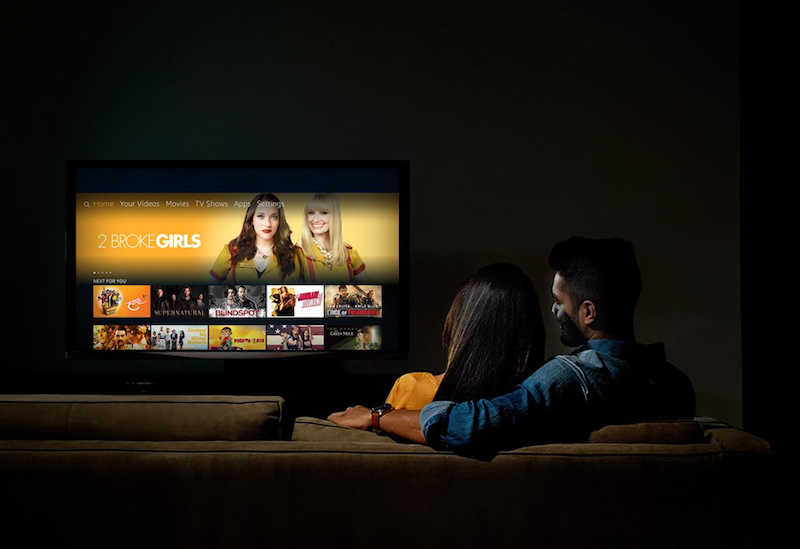Report: Consumers winning the streaming wars
March 30, 2022
This year’s Digital media trends survey from Deloitte reveals that media companies in the US are now feeling more turbulence from the deeper currents shaping consumer behaviour. After 15 years of growth, SVoD services have successfully unbundled video, lowered costs to consumers, and ignited fierce competition among providers. Top SVoD services are consolidating content and taking the competition for subscribers into global markets. But they face greater pressure to attract and retain subscribers who have grown savvier about their subscriptions and more cost-conscious.
In that same 15 years, screen-based entertainment has evolved beyond TV and movies. Streamers and studios are challenged to attract and retain younger generations who have grown up with smartphones, social media, and video games, which deliver finely tuned experiences that are social, interactive, and immersive. So, while SVoD providers may have disrupted TV and movies, the medium – and its business models – still looks much the same as it did when they were created 15 years ago.
Since then, social media has expanded and evolved dramatically. Social media services now deliver finely tuned and personalised feeds of images, video, music, news, gaming, and shoppable media to billions of users, all lit up by social networking and provided for free. Top services are adding new lines of revenue by becoming retail destinations and leveraging influencers and creator economies to reinforce engagement and purchasing.

Meanwhile, thanks to smartphones, competitive eSports, and rich, Hollywood-level experiences that cast the player as the star, gaming has gone global and expanded across generations. Gaming may have started as an individual experience, but it is now highly social. And game companies have evolved to monetise many aspects of gaming, from subscriptions, in-game purchasing, and extensible games that operate more like services, to embracing the social experience of gaming with multiplayer, branded content, and virtual goods.
Although SVoD broke apart the cable bundle, since then, streamers and studios have mostly focused their innovation strategies on content delivery and licensing rights. Social media and gaming companies have been quickly evolving their business models and products, leveraging technology, and capitalising on behaviors. This doesn’t mean all digital media must become social and interactive. But SVoD services should be aware that more audiences are finding entertainment, community, and even meaning, elsewhere.
This year’s study expanded beyond the US; Deloitte also included the UK, Germany, Brazil, and Japan—areas where media and entertainment companies are competing for digitally mature audiences. Overall, the trends seen in the US are echoed in these countries, with the same generational contours. Amidst a global pandemic that has constrained in-person activity, people and companies are being accelerated into digital life, setting the stage for the current excitement about the metaverse—where virtual spaces become common destinations for work and play. But these shifts were already in place before Covid-19. With millions recording themselves doing the latest viral dance moves, influencers driving sudden demand spikes for products, top musicians delivering other-worldly concert experiences to global gaming audiences, and virtual goods becoming valuable and scarce with non-fungible tokens (NFTs) and cryptocurrencies, digital life may be gaining on so-called real life.
Social media broke open the TV screen and made fame much more accessible. Gaming enables us to act in the movie. Media and entertainment executives – and especially those in SVoD – should be thinking hard about how people socialise around entertainment and how entertainment itself is becoming more personalised, interactive, and immersive. The business models that have brought them this far, and even the technologies they have relied on, may not carry them through the next wave of change.
The SVoD conundrum
The shift to streaming video has been extremely successful at disrupting television, though potentially far less profitable. Like TV and movies before them, SVoD companies have relied on the innate emotional and intellectual value of their stories to engage audiences and monetise their attention. But will people always value this kind of passive, lean-back-and-watch experience? That’s the big question. As more major media providers launch their own streaming video services, competition among them has heated up, just as their value proposition to audiences may be losing some of its lustre.

For top SVoD services, growth in North American subscribers has slowed. As they pursue global markets, and as those markets mature, they may be facing the same challenge. For consumers, getting their entertainment through the fragmented SVoD landscape requires more effort and, increasingly, nearly as much money. Over the past two years, US consumers have become increasingly frustrated when they lose content to other services, have to manage multiple subscriptions, and receive poor recommendations.
These conditions lead to churn: when people cancel, or both add and cancel, a paid SVoD service. In the US, the average churn rate has remained consistent since 2020 at about 37 per cent across all paid SVoD services. It should be noted, however, that churn for a given service might be significantly lower than the overall average. In the UK, Germany, Brazil, and Japan, the overall churn rate is closer to 30 per cent. (This number varies for each country, largely driven by subscription penetration and number of SVoD services.)
People are attracted to SVoD by the content, but they often leave due to cost. Generation Z consumers are especially sensitive to services being too expensive. It costs money to acquire subscribers, so losing them too quickly can hamper providers’ ability to recoup their acquisition costs. However, cancelling a service doesn’t mean they won’t return. One-quarter of US consumers have cancelled a streaming video service in the past 12 months and resubscribed to the same service, with younger generations significantly more likely to return. In the UK, Germany, Brazil, and Japan, around 22 per cent overall have churned and returned. Once again, the behaviour is stronger among younger generations.
Why do respondents say they churn and return? Either a new season of their favourite show was released, they got a free or discounted rate, or content they wanted to watch moved to the service. Around a quarter of people across the countries Deloitte surveyed admit they routinely cancel and resubscribe to manage costs. In every country surveyed, consumers – particularly Gen Zs and Millennials – are getting savvier about determining how much money they will spend on what content. As stated before, it looks like consumers are winning the streaming wars.
How can SVoD providers keep subscribers around?
To retain more subscribers, SVoD providers are exploring ways to shift the value proposition in their favour. Offering flexible pricing options could be the most direct path. Among consumers in all five countries surveyed, options that allowed people to watch ads in exchange for lower costs—or at no cost—are the most popular. Ad-supported tiers could attract more cost-conscious subscribers. And even when there are lulls in engaging content, subscribers may not cancel their subscription if the cost is low enough.
Streaming services can also use gated content to offer consumers pricing tiers. Some companies are experimenting with offering premium access to everything at a higher price and cheaper options for less content. The global study found that many respondents thinking of cancelling a paid SVoD service would likely keep their subscriptions if they could get a discount. Some would be willing to watch more ads, or less content, or wait 45 days to watch a new release.
Bundles and perks can also support subscriber retention. If US respondents were thinking about cancelling an SVoD service, 37 per cent said that access to first-run movies would convince them to stay, and 34 per cent would stay if a loyalty program were included. Among Gen Zs and Millennials, about 51 per cent would stay if their subscription included a gaming or music service or another SVoD service.
All of these pathways could reinforce the value of SVoD, help with retention, and even support greater profitability, but they can also put different pressures on revenues. However, SVoD itself may be facing a greater challenger in the evolving preferences of younger generations: Gen Z and Millennial consumers who have grown up with social and interactive media.
The shifting sands of media and entertainment
Overall, the survey showed watching TV and movies at home remains the favourite entertainment activity, but this trend skews significantly toward older generations. Across all five countries surveyed – the US, the UK, Germany, Brazil, and Japan – Gen Z respondents cited playing video games as their favourite entertainment activity. More generations may catch up. For UK Millennials, gaming is a close second to watching TV and movies at home, and Japanese Millennials rank playing video games as second to browsing the internet. Similarly, use of social media is high and skews toward younger generations. Social has become a gateway for video, music, news, gaming, and the communities and content creators that keep it all moving.

Social media and gaming further challenge retention for SVoD services. Every time a streaming show ends, a recommendation fails to engage, when subscription costs mount, or even when attention strays—these are moments when people may turn to social media and gaming. Yet, larger generational changes are likely underway, shifting the sands of the media and entertainment landscape.
People are finding more relevant, engaging, and shared entertainment on social media
Social media services have become increasingly dynamic spaces. For many consumers, these services have offered essential ways to connect, gather information, and stay entertained. They provide both passive and active experiences and offer up near-infinite streams of personalised content – all lit up with swarming behaviours around trending content. And it’s all free and available anywhere, anytime.
In contrast to SVoD services, social is full of content that is bite sized, snackable, and highly personalised. People log onto these platforms regularly and they can be entertained for a minute or an hour. In the United States, some 80 per cent of social media users say they use social media services at least daily and 59 per cent use these services several times a day. Across the US, the UK, Germany, Brazil, and Japan, Gen Z, Millennial, and Gen X consumers are consistently more likely to use these services.
Another differentiator from SVoD: Social is largely free. And the library of content is massive and seemingly never-ending. Users are listening to music, reading and watching news, watching TV shows and movies, and playing games, all in one place. Their newsfeeds are personalised by algorithms that serve up exactly what they want. No chasing content, and no subscription needed.
User-generated content – which is usually short-form and easily consumable – has been bolstered by the rise and reach of video-centric, algorithmically fuelled social media services. And it’s often highly engaging. About half of US respondents say they watch more user-generated content than they did six months ago, and half say they always end up spending more time watching user-generated content than they had planned (a number that jumps to 70 per cent among Gen Zs).
Rich troves of user data power algorithms that continuously refine themselves to get the most compelling and engaging content, ads, and recommended user accounts in front of the right audiences. In essence, the content discovers you. And it’s competitive with the TV experience. Around four in 10 US respondents say they spend more time watching user-generated video content than they do TV shows and movies on video streaming services – a sentiment that increases to around 60 per cent for Gen Zs and Millennials.
Much of this user-generated content is fuelled by the creator economy and so-called influencers—users whose large followings enable them to monetise their content through brand partnerships on these platforms.7 Following influencers helps users connect with communities of like-minded people – an affordance not easily replicated on SVoD services. Seventy percent of US respondents say they follow an influencer, and one-third say these online personalities influence their buying decisions – a figure that increases to more than half for US Gen Zs and Millennials.
The appeal of influencers is a global trend: 88 per cent of survey respondents from Brazil follow an influencer, as do 79 per cent of respondents from Japan. People worldwide, especially younger ones, are drawn to influencers—from the content they post, to the lifestyles they promote, to the communities they create—and often relate to them on a personal level.
With such large global audiences, social media services are becoming shoppable retail destinations, enabling businesses big and small to reach new audiences and potential customers. Leveraging the same data and algorithms, these services can deliver ads and product placements that are highly targeted and personalised. More than half of US respondents and around 40 per cent or more in the UK, Germany, and Japan say they see ads on social media for products or services they have been looking for—a number that increases to 72 per cent in Brazil. These sales are highly profitable for social media services: In addition to making money on the ads they sell, they can also take a percentage of the sale price when a product is purchased, expanding their revenues beyond advertising.
With hundreds of millions of users, social media services and the brands they support can capitalise on fast-moving trends. Indeed, some reports show sudden spikes in demand for products that have gone viral on top social media services. So, while the audience for SVoD is larger than ever, experiences that are social, interactive, and shoppable are competing for more of audiences’ time, attention, and money.
